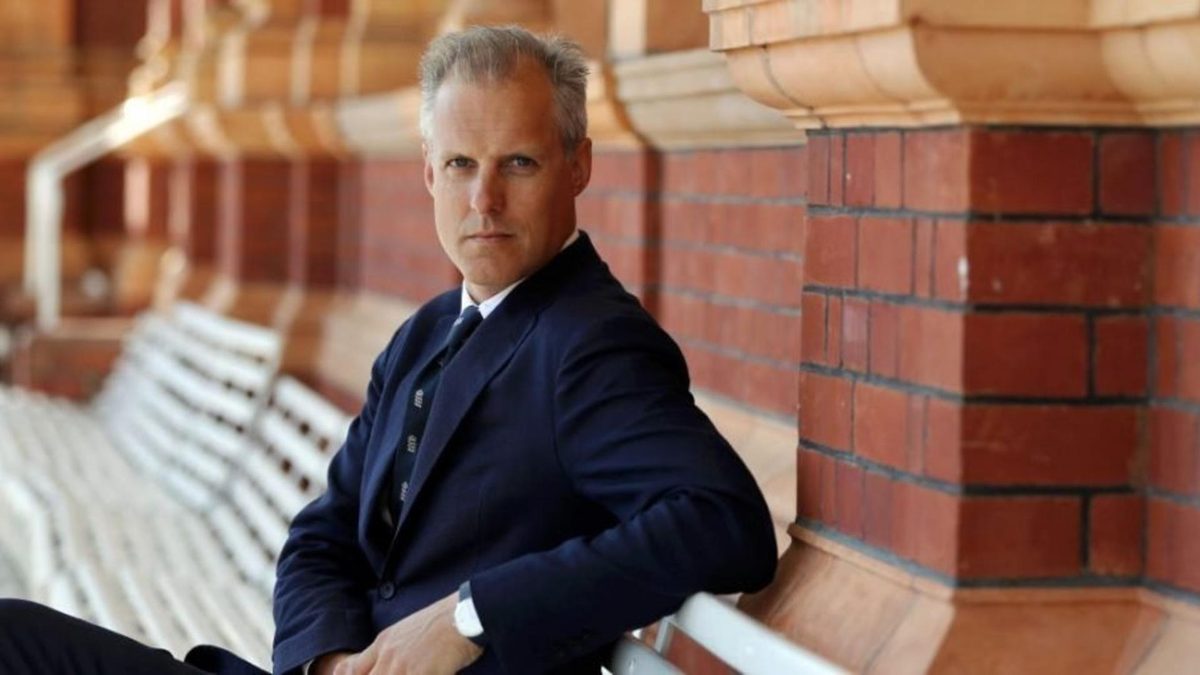
Ed Smith is no longer England’s national selector after three years on the job. Wisden Cricket Monthly editor-in-chief Phil Walker reflects on Smith’s stint and Chris Silverwood’s promotion.
Ed Smith’s tenure as national selector is over, with the post he’s occupied for three years dissolving with his departure. His removal goes some way to disentangling the many strands of influence at the top of the England set-up, with ultimate responsibility for selection now resting with Chris Silverwood, the unflappable loyalist whose transparent devotion to the job and earthy integrity has secured the support of the people who really matter: the senior players. He now assumes greater control over the XIs that take the park for England’s men’s team than any of his predecessors. It’s quite an elevation.
In a sporting world turned ever more bloated and unhinged this week, there is logic behind the streamlining. Ashley Giles, the MD of English cricket and the chief architect of the restructure, spoke last night of making “the lines of accountability much clearer”, which means that while Silverwood will still be expected to disseminate the reams of digital intelligence on players – ironically a process first championed by Smith, but which will now be done by the new head scout James Taylor and the ubiquitous performance director Mo Bobat – the buck will ultimately stop with him. “The current process of selecting England teams has been in place for over 120 years,” said Giles. “With advances in technology and a greater information gathering resource at our disposal than ever before, the restructure is in the best interests of helping England men’s teams be successful.”
An impression had been growing of an overcrowded workplace at the apex of English men’s cricket, with competing agendas disfiguring what had come to be seen as a mismanaged and messy winter programme. However well-intentioned, the ploy of resting some of England’s IPL-bound Test cricketers for large chunks of a marquee Test series looked bad at the time and given the stakes, and the much-trumpeted beginnings of a defining year for Joe Root’s captaincy, could not have passed harmoniously. Tellingly, it’s understood that Root favours the reshuffle, as does Eoin Morgan (though you sense that the latter’s personal fiefdom will remain blissfully unaffected by mere changes of the guard).
Fairly or not, the winter’s mishmash appeared to stick to Smith, and in some respects he has carried that particular can. But it’s worth noting that Giles would have been the sign-off man on the policy, having sought input from coaches, captains, senior players, kit men, masseurs, team chaplain etc. Decision by committee rarely coheres.
Smith was far from alone this winter in viewing a reality where money had already done its thing, and the direction of travel was felt to be irreversible. With the players and their agents running the show, no one at the ECB felt able or willing to compel their best players to prioritise their careers differently. A progressive thinker untethered by herd-thought, Smith may well have concluded that they were merely reacting to the unique circumstances of the time, but from the outside it felt like a line which should never have been crossed.
Now Smith himself will rejoin the ranks of the outsiders, where he has often appeared most comfortable, writing, commentating, theorising, interrogating accepted thought. Indeed it was this outlying curiosity and passion for data-driven analysis that first persuaded Andrew Strauss, then doing Giles’ job, to turn leftfield and appoint him in the first place. Smith was credited with resurrecting the Test careers of Jos Buttler and Adil Rashid and trusting in youth with picks like Ollie Pope and Sam Curran in a successful first summer of 2018, before Morgan’s men lifted the big one a year later. A certain rigour was deployed to the art of selection. His tenure overall will be remembered positively, and especially so by certain members of the press, who appreciated Smith’s willingness to expand on a point and engage in ideas beyond the normal platitudes of the media-subject ritual.
The Cambridge blue with the double-first could never quite shake a reputation for loftiness. It dogged him during his time as a player, and then in the latter months of his ECB role, by which time mutterings about his communication style had become commonplace. He left his home club Kent in murky circumstances in 2004, bewildered by the club’s committee and at loggerheads with the overseas pro Andrew Symonds, the hogpile to Smith’s shagpile. While he found greater acceptance at Middlesex, the impression of an intellectual outsider, one who literally wrote the book on luck – that dirtiest of words in sporting circles – never quite left him. For a time, such traits were considered a virtue at the top of English cricket. Now he is free to explore them again.
What all this amounts to is the bedding down of a new system more in keeping with the established hierarchies that tend to dominate the sporting world. The man whose nervy unveiling to the media in 2019 offered an intriguing counterpoint to Smith’s urbane dash has been handed complete control over the make-up of England’s future squads. Head coach, chief selector, unlikely figurehead: Chris Silverwood is now the unassailable top dog. It’s another bold move, of the kind which English cricket appears to rather enjoy making.







